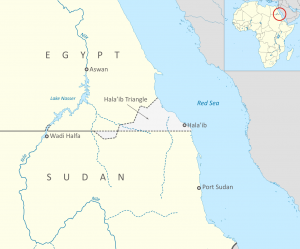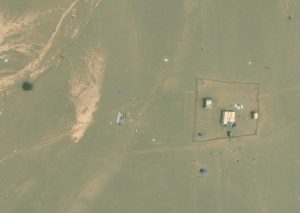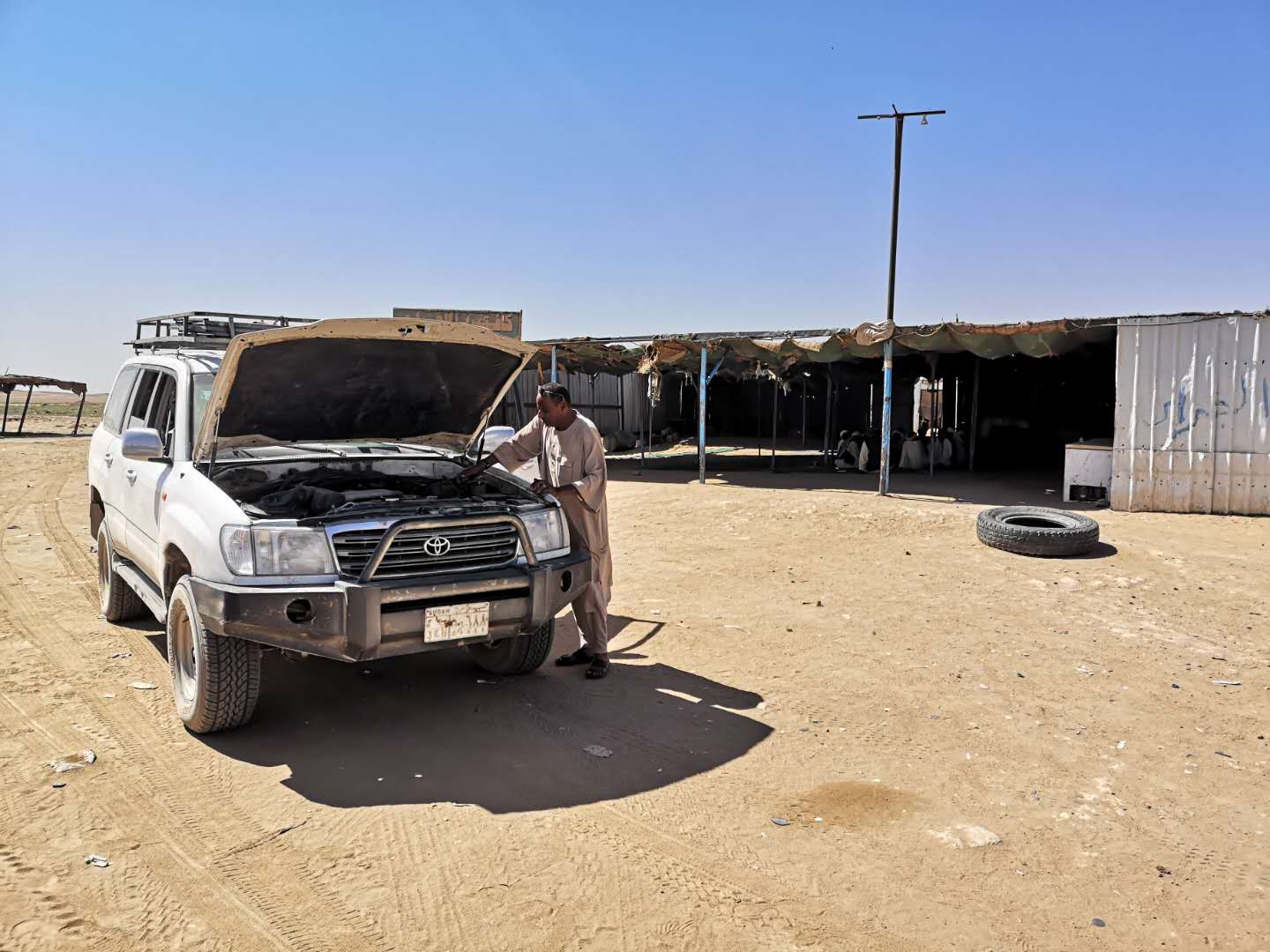To the south of Egypt lies Bir Tawil, a land that is unclaimed by Egypt and Sudan—garnering international curiosity and actively claimed by at least three different ‘kings.’
It is the last non-Antarctic terra nullius, or stateless land, in the world, and it is right on Egypt’s border with Sudan. The land has no permanent population, is largely a resourceless desert, and only measures at 2,060 square kilometers. Both Egypt and Sudan have ignored it, leaving room for adventurous individuals to claim the land as theirs’, such as Jeremiah Heaton who went to Bir Tawil and planted a flag so his daughter could be a princess.
The reason for Bir Tawil’s status lies in a neighboring region: the Halayeb Triangle.
A decades-long dispute over border demarcations, rooted in the region’s British past, has bound the fates of Bir Tawil and Halayeb together—one cannot be claimed without renouncing the other.
Compared to Bir Tawil, the Halayeb Triangle is much more economically appealing. It is larger, measuring at 20,580 square kilometers, rich in minerals and offshore natural resources, and has a permanent population of 27,000 people.
Its allure over Bir Tawil has led both Egypt and Sudan to claim Halayeb as their territory, meaning Bir Tawil remains unclaimed.
Colonial History
Although today the Egyptian flag flies over the Halayeb Triangle, and it is de facto administered by Egypt, Sudan still considers it an integral part of its territory. The dispute over the Halayeb Triangle that led to Bir Tawil’s unique situation stems from the fact that the joint British-Egyptian government established two different borders between Egypt and Sudan during the British imperial era.
The Anglo-Egyptian Condominium Agreements of 1899 established the boundary between Egypt and Sudan as the 22nd parallel north. This is where the majority of the modern Egyptian-Sudanese border still runs. According to this agreement, Bir Tawil is a part of Sudan and the Halayeb Triangle is a part of Egypt.
However, in 1902, Egypt altered the boundary in the far eastern portion of the border to better reflect the administrative reach of Cairo and Khartoum in the area. Egypt’s interior minister Mustapha Fahmy promoted this move as to not separate the Ababda and Basharya tribes. The alterations led to the transfer of an area north of the 22nd parallel north—that later became known as the Halayeb Triangle—to Sudan, and the transfer of a small area of land south of the 22nd parallel north—known as Bir Tawil—to Egypt.
Following Sudan’s independence in 1956, Egypt regarded the borders set by the 1899 agreements as the modern borders of the two nations, while Sudan regarded the borders set by the alterations in 1902 as the modern borders. This meant that both nations claimed the Halayeb Triangle as their own and neither claimed Bir Tawil.
Post-Independence
For decades, both nations effectively joint-governed the Halayeb Triangle. Bir Tawil on the other hand, on the basis of its lack of resources and permanent population, remained largely ignored.
The era of joint-governance continued with bitterness in 1992 when Sudan granted oil-exploration rights for the waters off of the coast of the Halayeb Triangle. Both Egypt and Sudan doubled down on their claims over the Halayeb Triangle.
In 1995, Egyptian President Hosni Mubarak survived an assassination attempt on his way to attend an Organisation of African Unity meeting in Addis Ababa, Ethiopia. The Egyptian government believed that Sudan may have been complicit and in response, expelled Sudanese authorities from the Halayeb Triangle, officially ending joint Egyptian-Sudanese governance.
If either Egypt or Sudan were to claim Bir Tawil, then that would mean they recognize the grounds of the treaty that the other nation favors, thereby also granting the other nation the more appealing Halayeb Triangle.

No other recognized nation has laid claim to Bir Tawil, and the status of the last formally unclaimed non-Antarctic land became known to people across the globe.
Bir Tawil Today
In 2014, an American named Jeremiah Heaton famously flew to Egypt and made a 14-hour caravan trek to Bir Tawil.
He named Bir Tawil “The Kingdom of North Sudan,” and his daughter a princess of it. Although neither he nor his family moved to Bir Tawil, Heaton later stated that he hopes to make the country a hub “devoted to finding innovative solutions for energy efficiency and growing food in an era of climate change.”
Heaton had also claimed that he spoke with Egyptian and Sudanese officials about building infrastructure and creating an economy in Bir Tawil.
Similarly, travelers who have fashioned themselves as King Dmitry I and Duke Mika Ronkainen have claimed to have traveled to Bir Tawil later that year. They declared it “The Kingdom of Mediae Terrae Bir Tawil,” and set up an incomplete website describing their new country. Suyash Dixit, an Indian, also claims to have gone to Bir Tawil in 2017 and declared it “Kingdom of Dixit.”
Like Heaton, some saw it as a way to address political shortcomings. Nadra Nassief, a Lebanese-American, declared Bir Tawil “Kingdom of the Yellow Mountain” and as a place to address the world’s refugee crises. Like other declarations of nationhood in Bir Tawil, little materialization has occurred and neither the Egyptian nor the Sudanese government addressed them.
More recently, in 2019, Young Pioneer Tours (YPT), a tour group created by expats living in China that organizes regular travel to “over 100 other unique destinations,” claimed to have gone to the unclaimed territory.
Gareth Johnson, one of the founders of YPT, said that the land rightfully belongs to the local Ababda tribe. He claimed that there are a few small townlets in the area, which are inhabited by periodic gold miners from the local Ababda tribe.
He also stated that the Ababda are fiercely protective of their land and are aware of the international curiosity with it and claims that it is uninhabited.
Practical Implications
This phenomenon—of people from around the world seeing Bir Tawil as the last terra nullius—has meant that they saw it as land untethered to any group of people. It became an opportunity for some to imagine creating governments to their likings and pursue business opportunities.
Heaton said, “a lot of these large corporations, they see market opportunities in what I’m doing.”
However, it is difficult to argue that there is any place on Earth that no one associates themselves with, especially when the way that cultures think about their connections with the land around them fundamentally differs in nomadic and settler societies. Historically, the concept of terra nullius was used in the colonization of the Americas and Australia.
For this reason, the term and historical practice of claiming ‘unclaimed’ land carries a negative connotation to many. Though Bir Tawil has no permanent population, some, including journalist Jack Shenker—who went to Bir Tawil in 2010—consider the idea of calling a land peopleless problematic due to the possible imposition of foreign actors onto that land. If anything were to materialize beyond the simple declarations of nationhood in Bir Tawil, it is important to consider the implications of the classification of Bir Tawil as a stateless, and thus peopleless, land.

For now, with fighting in Sudan ongoing since April, the Halayeb Triangle and Bir Tawil’s official status are unlikely to change soon, keeping Bir Tawil as an interesting piece of land free of modern political reach for the foreseeable future.







Comments (4)
[…] Bir Tawil: the Stateless Land of Many and No Rulers […]
[…] Source link […]